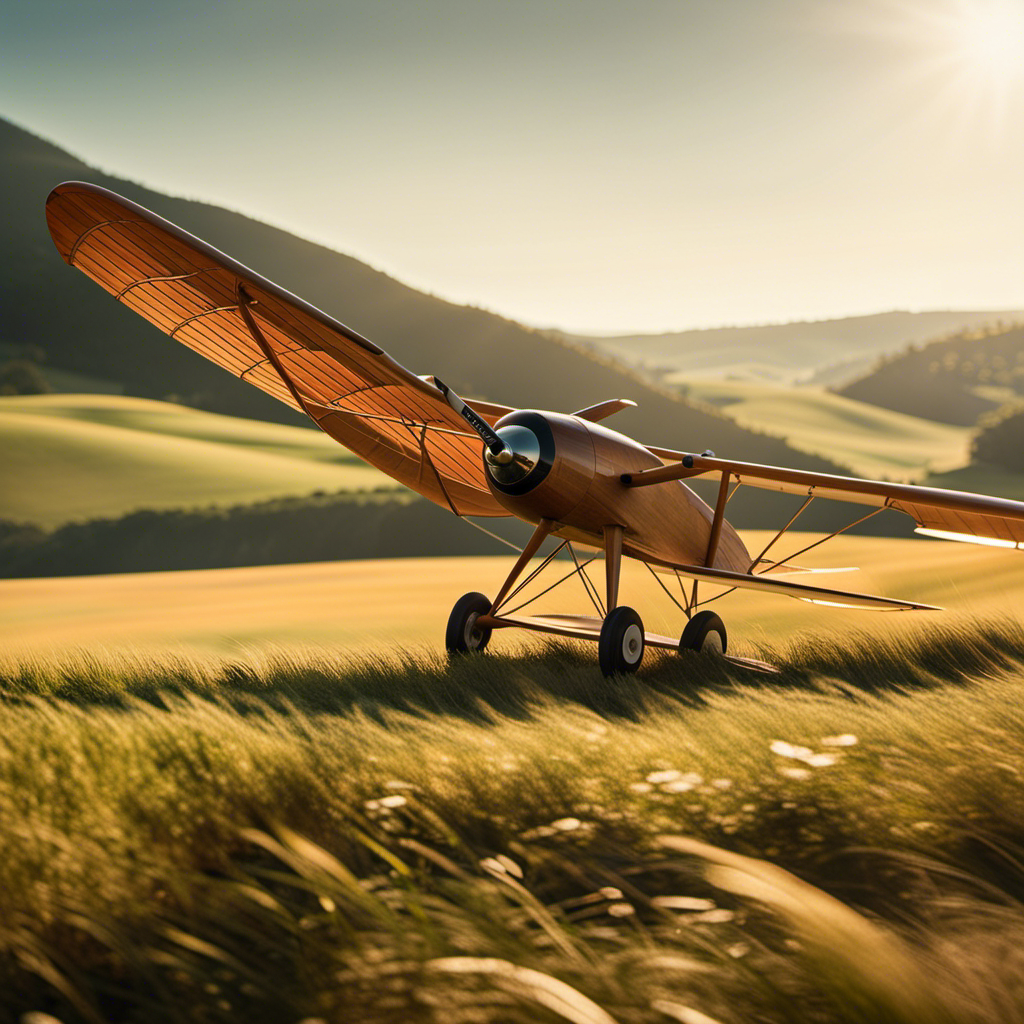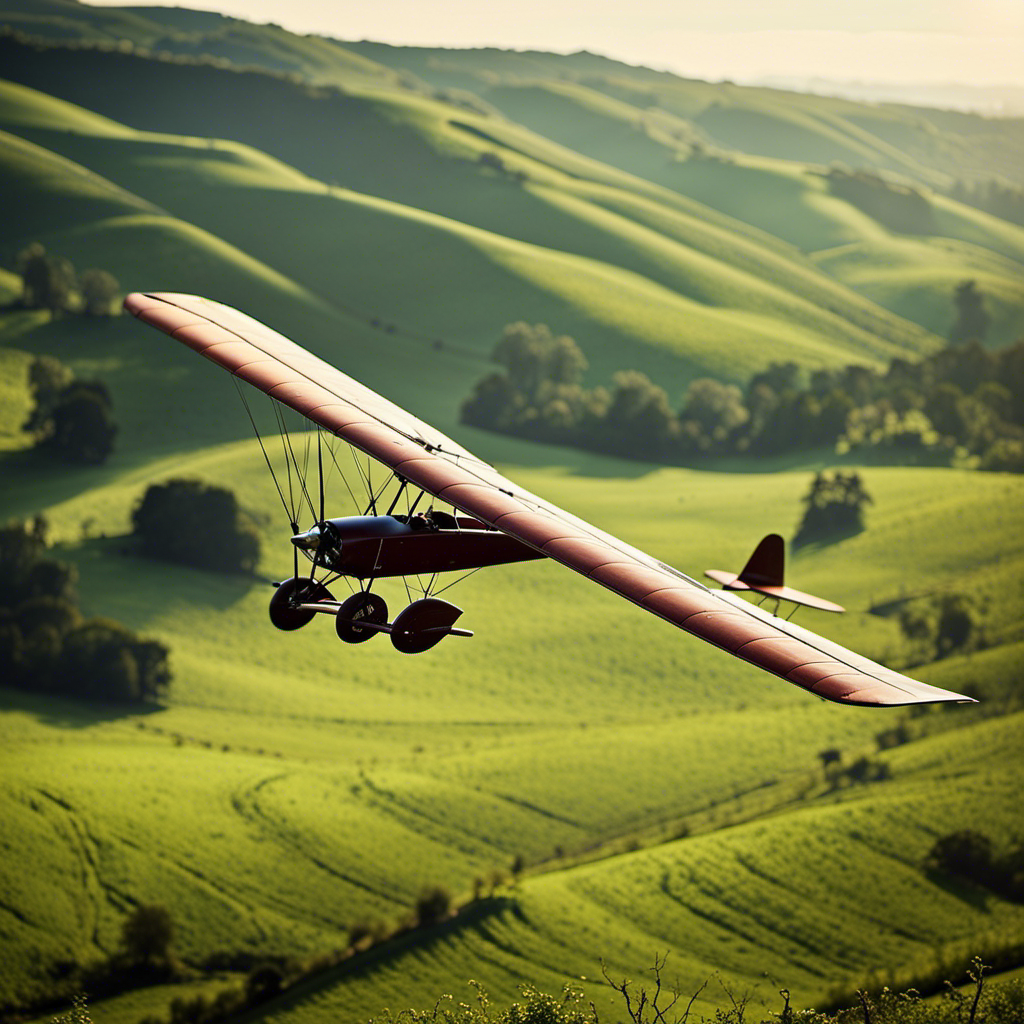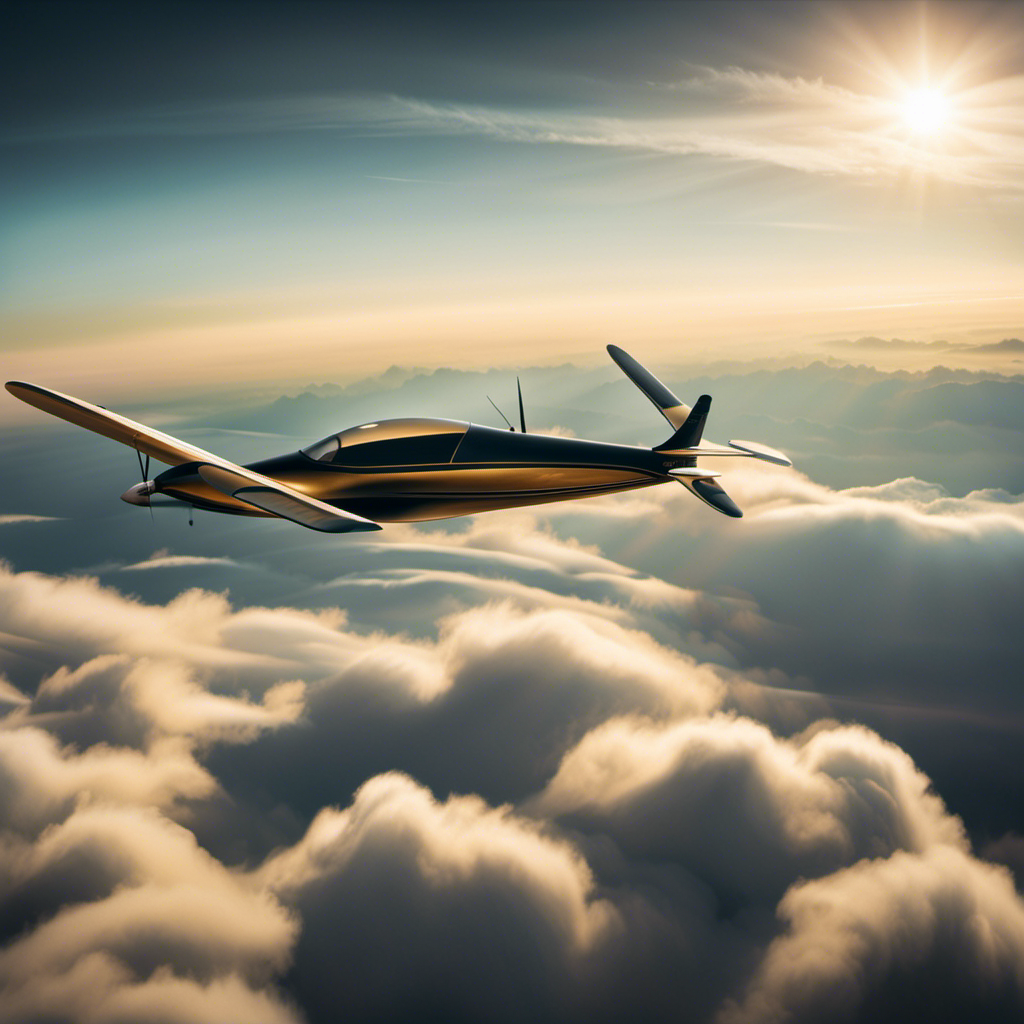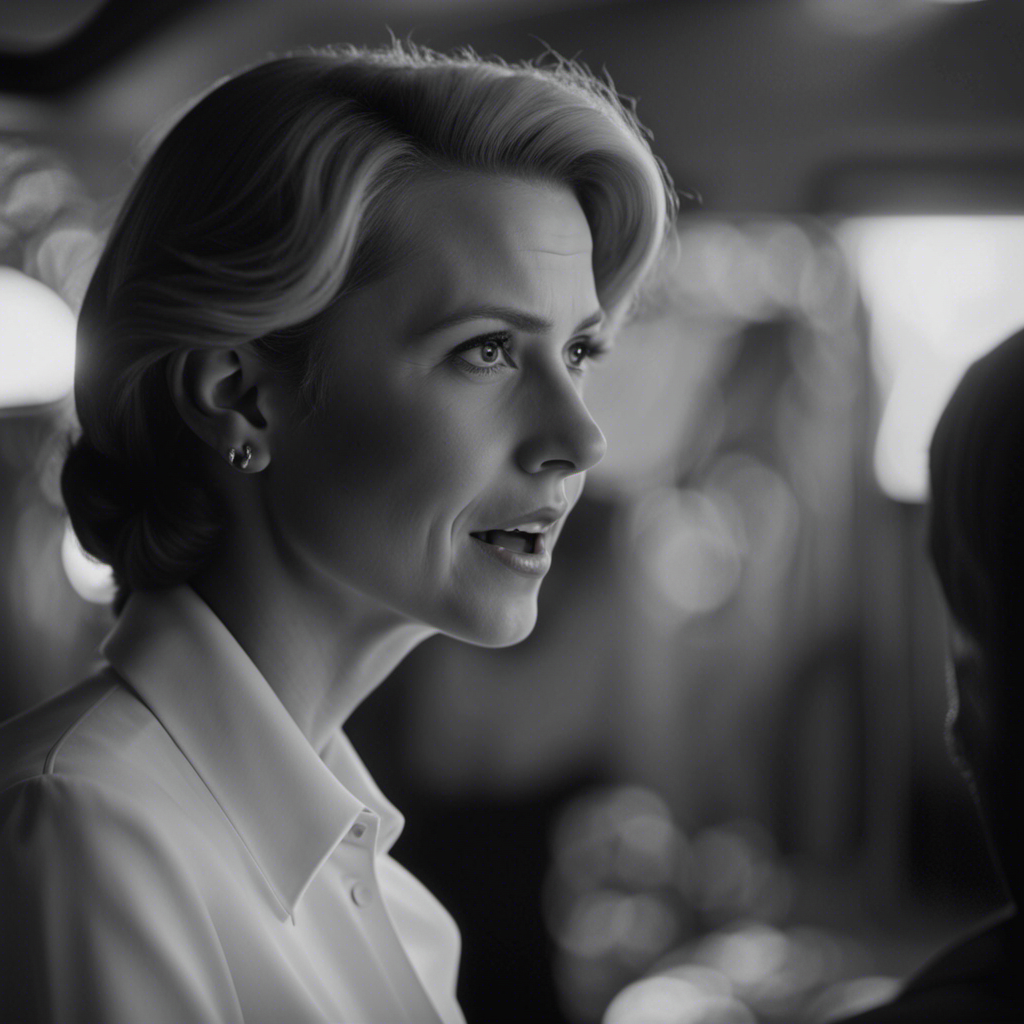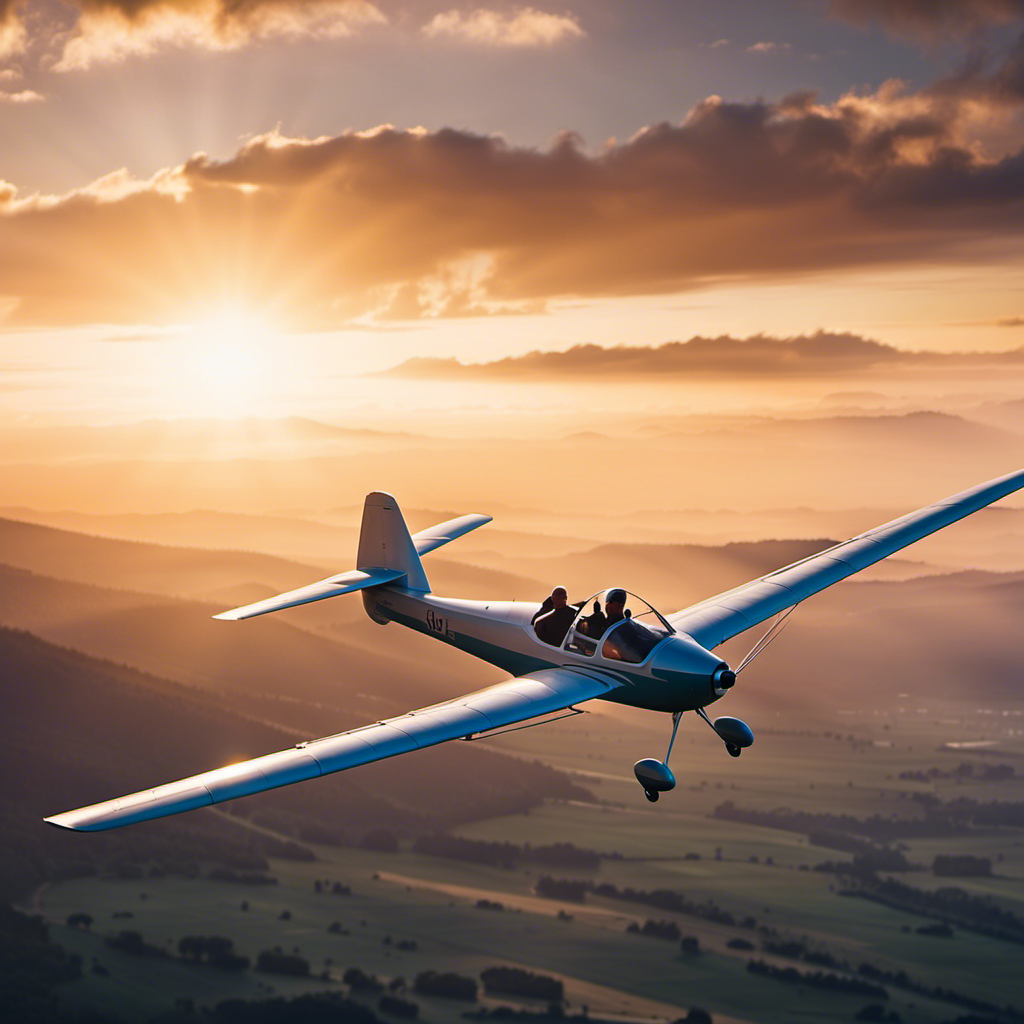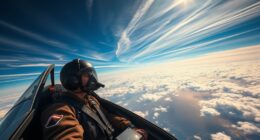As I explore the pages of history, I am captivated by the extraordinary story of the first glider plane. The creation of this aircraft marked a major advancement in humanity’s quest for flight.
From the early pioneers like Sir George Cayley to the ground-breaking innovations of Otto Lilienthal, the evolution of glider design paved the way for the birth of modern aviation.
Join me on this journey as we uncover the origins, advancements, and enduring legacy of the first glider plane.
Key Takeaways
- Glider planes inspired innovation in aviation and paved the way for powered airplanes.
- Gliders played a significant role in military operations, providing stealthy and efficient transportation for troops.
- Glider competitions encouraged glider design and technology innovation, pushing the boundaries of flight.
- Glider planes were instrumental in the development of powered flight, laying the foundation for the modern aircraft we see today.
Early Attempts at Flight
Early attempts at flight didn’t involve powered engines, but instead focused on glider planes. The pioneers of aviation during this time were driven by the dream of soaring through the skies like birds. They recognized the limitations of early glider designs, which were heavily influenced by the principles of bird flight. These early pioneers observed that birds had wings with curved surfaces that generated lift, and they attempted to replicate this in their glider designs. However, they soon realized that simply imitating bird wings was not enough to achieve sustained flight.
One of the key limitations of early glider designs was their inability to generate enough lift to overcome the force of gravity for extended periods. The lack of a propulsion system also meant that glider planes were reliant on external forces, such as wind, to generate the necessary lift to stay aloft. Additionally, the lack of control mechanisms made it difficult for pilots to maneuver and maintain stability in the air.
Despite these limitations, the early pioneers laid the foundation for future advancements in aviation. One such pioneer was Sir George Cayley, whose contributions would revolutionize the field of flight. With his innovative designs and theories, Cayley would pave the way for the development of powered flight.
Sir George Cayley and His Contributions
Sir George Cayley was a British engineer who made significant contributions to aviation. His inventions and ideas greatly influenced the development of flight. Cayley is often referred to as the ‘father of aviation’ for his groundbreaking work in the early 19th century.
One of his most notable inventions was the modern concept of the fixed-wing aircraft. Cayley designed and built the first successful full-scale glider in 1853, making him the first person to demonstrate sustained flight of a heavier-than-air machine. His glider had a wingspan of 10 feet and was controlled by a movable tail.
Cayley also made important contributions to aerodynamics, introducing the concept of lift and drag. He recognized the importance of a streamlined shape and experimented with various wing designs to optimize lift.
Cayley’s influence on aviation is far-reaching, as his ideas laid the foundation for future aircraft design and engineering principles. His inventions and theories inspired many aviation pioneers, such as Otto Lilienthal, who further advanced glider design and helped pave the way for powered flight.
Otto Lilienthal and the Advancements in Glider Design
Otto Lilienthal greatly advanced glider design by experimenting with various wing shapes and control surfaces. His experiments laid the foundation for significant improvements in glider plane design. Lilienthal’s dedication and innovation propelled the field of aviation forward, making him a true pioneer in the world of flight.
One of Lilienthal’s notable contributions was his extensive research on wing shapes. Through meticulous testing and observation, he discovered that a curved wing, or airfoil, provided better lift and stability compared to a flat wing. This insight revolutionized glider design and became the basis for modern aircraft wings. Lilienthal’s experiments also led him to develop the concept of control surfaces, such as the rudder and elevators, which allowed pilots to maneuver the glider more effectively.
To better understand the impact of Lilienthal’s experiments, let’s take a look at the following table:
| Experiment | Wing Shape | Control Surfaces |
|---|---|---|
| Experiment 1 | Flat | None |
| Experiment 2 | Curved (Airfoil) | None |
| Experiment 3 | Curved (Airfoil) | Rudder |
| Experiment 4 | Curved (Airfoil) | Rudder and Elevators |
As we can see from the table, Lilienthal’s glider design evolved from a flat wing with no control surfaces to a curved wing with both rudder and elevators. These design improvements allowed for increased lift, stability, and maneuverability.
With Lilienthal’s advancements in glider design, the stage was set for the next chapter in aviation history: the Wright brothers and the birth of modern aviation. Lilienthal’s experiments paved the way for further innovations, and his legacy continues to inspire aviation enthusiasts to this day.
The Wright Brothers and the Birth of Modern Aviation
As you explore the birth of modern aviation, you’ll discover the significant contributions made by the Wright Brothers. Orville and Wilbur Wright were pioneers in the field of aviation, and their innovations laid the foundation for the development of aircraft as we know them today.
Born in the late 19th century, the Wright brothers were fascinated by the idea of flight from an early age. They conducted extensive research and experimentation, ultimately leading to the invention of the first successful airplane. Their breakthrough came in 1903, when they successfully flew their aircraft, the Wright Flyer, at Kitty Hawk, North Carolina.
The Wright brothers’ achievement was a culmination of years of dedication and perseverance. Through meticulous design and engineering, they created a flying machine that was capable of sustained, controlled flight. Their aircraft incorporated numerous innovations, including a three-axis control system that allowed the pilot to maneuver the plane in the air. This breakthrough in flight technology marked the birth of aviation and paved the way for future advancements in the field.
With the Wright brothers’ success, the stage was set for the first recorded flight of a glider plane.
The First Recorded Flight of a Glider Plane
The Wright brothers’ groundbreaking achievement in aviation history was marked by their successful flight of a glider at Kitty Hawk. This recorded flight took place on December 17, 1903, and it was a pivotal moment in the development of aviation. The Wright brothers’ glider design was a culmination of years of research and experimentation, and it laid the foundation for future advancements in aircraft technology.
Their glider design incorporated several key elements that allowed for controlled flight. It featured a biplane configuration, with two wings placed one above the other, which provided stability and improved lift. The wings were also designed with a curved shape, or camber, which helped generate lift by creating a pressure difference between the upper and lower surfaces. Additionally, the brothers incorporated a system of wing-warping, where they could adjust the angle of the wings to control the aircraft’s roll and maintain balance.
The success of the Wright brothers’ glider flight demonstrated the potential of powered flight and sparked a wave of innovation in aviation. It inspired other inventors and aviators to build upon their design and develop more advanced aircraft. The impact of glider planes on aviation history cannot be overstated, as they paved the way for the development of powered airplanes and revolutionized transportation and warfare.
The Impact of Glider Planes on Aviation History
You can’t underestimate the impact of glider planes on aviation history. These early aircraft played a significant role in both military operations and glider competitions, shaping the future of aviation in numerous ways.
In terms of the military, glider planes revolutionized tactical warfare by providing a stealthy and efficient mode of transportation for troops and supplies. During World War II, gliders were successfully used in major operations such as the invasion of Normandy and the Battle of Arnhem. Their silent approach and ability to land in small spaces allowed for surprise attacks and strategic maneuvering that conventional aircraft couldn’t achieve.
Glider competitions also played a crucial role in the development of aviation. These events pushed the boundaries of flight and encouraged the innovation of glider design and technology. Pilots from around the world showcased their skills and competed for distance, duration, and accuracy in landing. These competitions not only improved the performance of glider planes but also served as a testing ground for new techniques and theories in aerodynamics.
The impact of glider planes on aviation history cannot be overstated. They paved the way for the development of powered flight, as many early aviation pioneers, including the Wright brothers, drew inspiration from glider designs and principles. Glider planes demonstrated the possibilities of flight and laid the foundation for the aircraft that would follow.
The Development of Powered Flight
Don’t underestimate the significance of powered flight in shaping the future of aviation. The development of powered flight revolutionized the way we travel and explore the skies. It marked a major milestone in aviation history, opening up new possibilities and paving the way for the modern aircraft we see today.
To understand the impact of powered flight, it is essential to examine the evolution of glider design. Gliders, or non-powered aircraft, played a crucial role in the development of powered flight. They allowed early aviation pioneers to study the principles of aerodynamics and perfect their designs before incorporating engines.
In the early 20th century, the Wright brothers conducted extensive experiments with gliders, refining their understanding of lift, drag, and control. Their achievements laid the foundation for the successful powered flight of the Wright Flyer in 1903.
To truly grasp the significance of powered flight, let’s take a look at a comparison between gliders and powered aircraft:
| Gliders | Powered Aircraft |
|---|---|
| Reliance on altitude and air currents for sustained flight | Ability to generate thrust and maintain controlled flight |
| Limited range and duration | Extended range and endurance |
| No propulsion system | Engines provide propulsion |
| High glide ratio for efficient gliding | Variable speed and altitude capabilities |
Understanding the progression from glider planes to powered aircraft is essential in appreciating the advancements made in aviation history. It set the stage for the next significant development: the use of glider planes in World War I.
Glider Planes in World War I
Glider planes played a crucial role in World War I, providing reconnaissance and training opportunities for pilots. Glider technology had advanced significantly by this time, allowing for longer and more controlled flights.
Gliders were used primarily for aerial observation, as they could glide silently and undetected over enemy lines, gathering valuable intelligence. Glider pilots in World War I were highly skilled and brave individuals who relied on their expertise to navigate the skies. These pilots underwent rigorous training to master the art of gliding, learning how to read the wind and make precise adjustments to their flight path.
Gliders were also used for training new pilots, allowing them to practice flying without the use of an engine. This helped pilots develop their flying skills and gain confidence before moving on to powered aircraft.
As World War I progressed, glider technology continued to evolve, paving the way for more advanced glider designs and the eventual development of motorized gliders. This evolution would lay the foundation for the future of aviation.
The Evolution of Glider Technology
By World War I, glider technology had significantly advanced, allowing for longer and more controlled flights. The evolution of glider technology can be traced back to the early 19th century when pioneers like Sir George Cayley and Otto Lilienthal made significant contributions to glider design. These early gliders were simple and lacked sophisticated controls, but they laid the foundation for future advancements.
Over time, glider technology underwent several important developments. The introduction of aerodynamic principles and the use of wind tunnels for testing allowed designers to refine the shape and structure of gliders. This led to improvements in lift, stability, and control. Additionally, advancements in materials, such as the use of lightweight aluminum and composite materials, made gliders lighter and stronger.
To better understand the evolution of glider technology, let’s take a look at a table comparing gliders from different eras:
| Era | Notable Glider |
|---|---|
| Early 19th century | Sir George Cayley’s gliders |
| Late 19th century | Otto Lilienthal’s gliders |
| Early 20th century | Percy Pilcher’s gliders |
| Mid 20th century | Slingsby T.21 glider |
| Modern era | Schempp-Hirth Discus-2 glider |
The advancements in glider technology have paved the way for modern glider planes and their uses today.
Modern Glider Planes and Their Uses Today
Modern glider planes, with their advanced technology and capabilities, are widely used today for various purposes. One of the most exciting uses of modern glider planes is in competitive gliding competitions. These competitions bring together skilled pilots from all over the world to showcase their flying skills and compete for the title of the best glider pilot.
The planes used in these competitions are highly sophisticated, with sleek designs and advanced aerodynamics to maximize performance. These gliders can reach impressive speeds and can stay aloft for long periods of time, allowing pilots to cover great distances and perform intricate maneuvers.
In addition to glider competitions, glider planes are also used in scientific research. These planes are equipped with specialized instruments and sensors that allow researchers to gather valuable data about atmospheric conditions, wind patterns, and other environmental factors. By studying the behavior of glider planes in different conditions, scientists can gain a better understanding of weather patterns, climate change, and other important phenomena.
Glider planes are particularly useful for studying remote areas that are difficult to access by other means. Overall, modern glider planes have revolutionized the way we fly and conduct scientific research. With their advanced technology and versatility, they continue to push the boundaries of what is possible in aviation.
Frequently Asked Questions
Who is credited with inventing the first glider plane?
I am credited with inventing the first glider plane. I am an American inventor known for my notable glider designs. My nationality is American and I revolutionized aviation with my groundbreaking innovations in glider technology.
How did glider technology evolve over time?
Glider technology evolved through early experiments and influenced aircraft design. From simple designs to advanced aerodynamics, gliders paved the way for innovations in aviation. The influence of glider technology on aircraft design is undeniable.
What were some advancements in glider design made by Otto Lilienthal?
Otto Lilienthal made significant advancements in glider design. He was a pioneer in aerodynamics and experimented with wing shapes, control systems, and stability. His work laid the foundation for modern glider technology.
How did glider planes impact aviation history?
Glider planes, like a gust of wind propelling aviation forward, revolutionized aircraft engineering and pilot training. They provided valuable insights into aerodynamics, leading to advancements in aircraft design and shaping the foundations of modern aviation.
What are some modern uses of glider planes today?
Some modern applications of glider planes include aerial photography, atmospheric research, and glider competitions. Glider competitions allow pilots to showcase their skills and compete in various categories such as distance, speed, and duration.
Conclusion
In conclusion, the first glider plane took flight in the late 18th century, thanks to the pioneering efforts of Sir George Cayley. His contributions paved the way for future aviation advancements, including Otto Lilienthal’s innovative glider designs.
However, it was the Wright Brothers who truly revolutionized flight, achieving the first recorded flight of a glider plane.
Since then, glider technology has evolved significantly, finding uses in World War I and continuing to thrive in modern applications.
Glider planes remain a testament to the remarkable ingenuity and perseverance of mankind in the pursuit of flight.
With a heart that soars as high as the skies, Aria, affectionately known as “Skylark,” is the driving force behind Soaring Skyways. Her journey into the gliding world began as a young dreamer gazing up at the soaring birds, yearning to experience the weightlessness and freedom they embodied. With years of experience both in the cockpit and behind the scenes, Aria’s commitment to the gliding community is unwavering.
